When Trails Connect Everyone, Everywhere
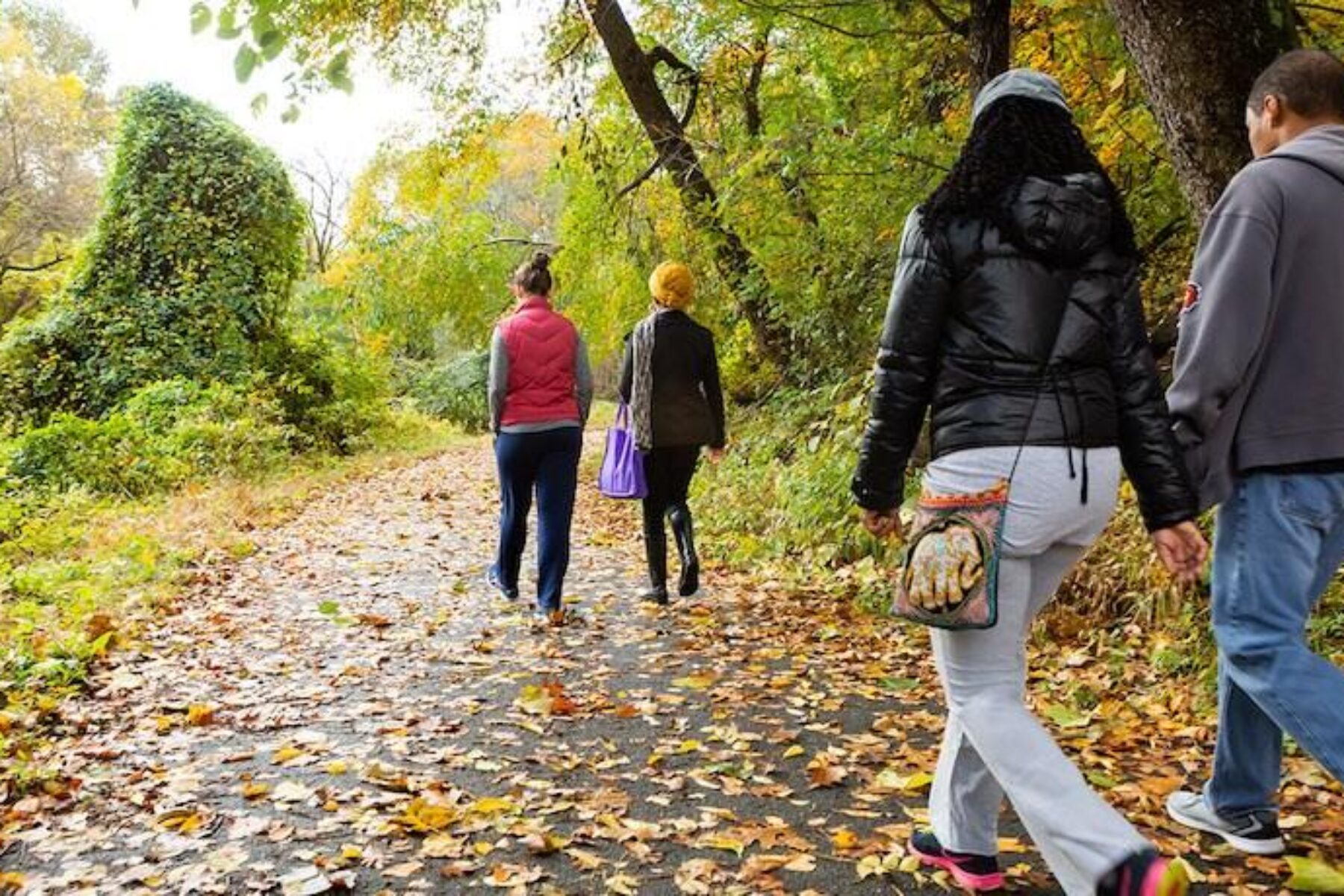
The end of the year is often a time for reflection as the days get shorter and the weather gets cooler. It’s a time for family, friends and connection; a time to set goals and plans for the years ahead. This moment takes on new significance as we end 2020 and look ahead to 2021.
This time a year ago, no one could have predicted how dramatically, or how quickly, the world would change. The shape of our lives has altered significantly, and the hardship for many has been heartbreaking.
A bright spot in this moment has been the power of the outdoors and public spaces to safely connect with our communities, to stay active, to discover hidden treasures in our own backyards. Through this time of so much uncertainty, trails have provided access to the outdoors, close to home, for millions of Americans. TrailLink, Rails-to-Trails Conservancy’s (RTC’s) trail-finder website and app, has been an invaluable resource, connecting more than 10 million people to trail maps as they sought ways to get outside.
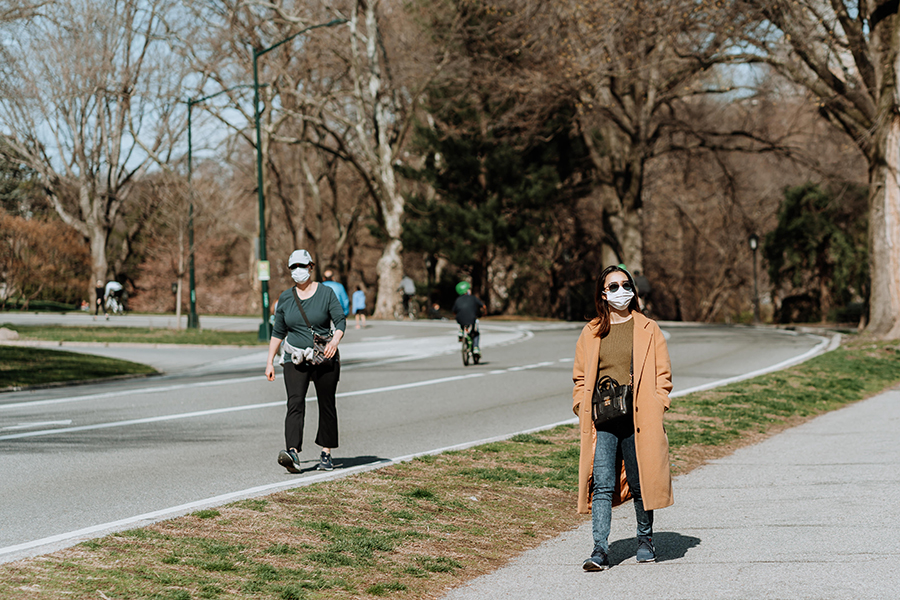
As the nation worked to endure COVID-19 this year, we at RTC acknowledged both the opportunity and the responsibility the pandemic presented.
Throughout this year, as we’ve continued to galvanize the trails movement in a virtual world, the movement itself has inspired us—in particular, the stories so many have shared of the moments of joy, respite, healing and strength they have found on the trail. The impact of our work in this time has brought urgency and focus to our path forward. Our path is one where we prioritize the strategies that deliver at national scale; that increase the diversity and representation of our movement, reducing disparities in opportunity and access to trails and the outdoors; and that are responsive—to the greatest needs of our movement and the country in a time of continued uncertainty and need.
With more people than ever discovering trails, there is much opportunity in keeping the “trail boom” going. Yet, the nation’s 40,000 miles of multiuse trails do not reach every neighborhood or every person in our country. We have a long way to go in addressing the systemic racial inequities that separate so many from equal access to the outdoors. We understand that access to trails and the outdoors is a privilege, and that we have a responsibility to lead in creating a future where everyone, everywhere can safely be active outside.
As we embark on a new strategic plan to sustain and grow our impact through and beyond the pandemic, we are guided by the opportunity and the responsibility we have to build a nation connected by trails. We are motivated by the opportunity we have to reimagine public spaces to create safe ways for everyone to walk, bike and be active outdoors.
Our new mission and vision are the goal posts to meet this moment and position trails for the future.
Our Mission: At Rails-to-Trails Conservancy, we are building a nation connected by trails. We reimagine public spaces to create safe ways for everyone to walk, bike and be active outdoors.
Building a Nation Connected by Trail
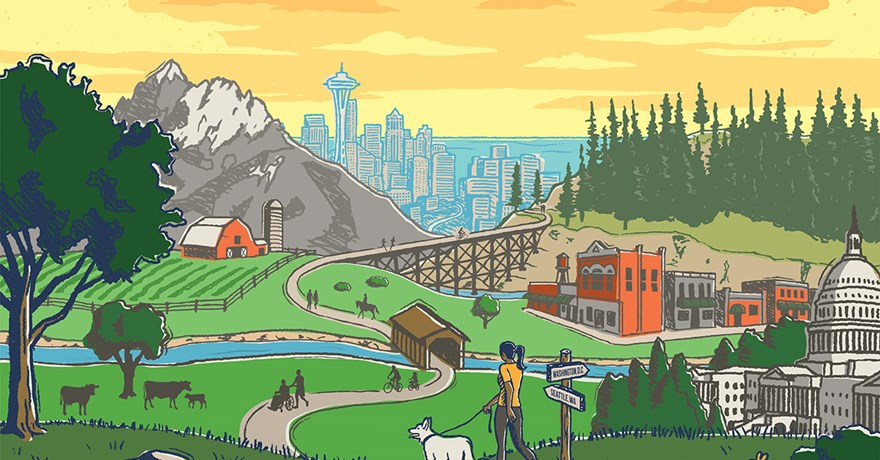
We’ve long imagined what would become possible by connecting the nation by trail.
For nearly 35 years, RTC has worked shoulder to shoulder with trail advocates, community leaders, elected officials and people across the country to lay the foundation for a nation connected by trails. With so many trails crisscrossing America, the framework to extend the benefits of these pathways by connecting them to each other and to more people has been built.
We’ve always believed that communities are healthier and happier when trail networks are central to their design—a strategy that’s proven incredibly valuable during the pandemic. Our work on TrailNation™ and the Great American Rail-Trail™ demonstrates the impact that regional trail networks and a coast-to-coast trail can provide—for our physical and mental health, and for the health of our economy, communities and the environment. The pandemic has made clear the potential of connected trail and active-transportation systems to deliver substantial outcomes at a time when the country is in need. Already, the trails in our country deliver an economic benefit of $34.1 billion each year, which could grow to as much as $138.5 billion as the connections between trails and other active-transportation infrastructure improves.
We have a powerful opportunity before us to maximize the benefits of the nation’s trails, working with the next Congress and the White House to significantly increase funding for trails and create an active transportation system that provides equitable access to jobs, mobility and safe places to get active outdoors. We have the opportunity to elevate the lessons and best practices developed in our TrailNation projects to deliver a playbook of strategies and tactics that will accelerate trail network development nationwide.
And we have the responsibility to work with our partners to protect funding for trails at the state and local level where the economic effects of the pandemic may be felt the hardest.
Reimagining Public Spaces
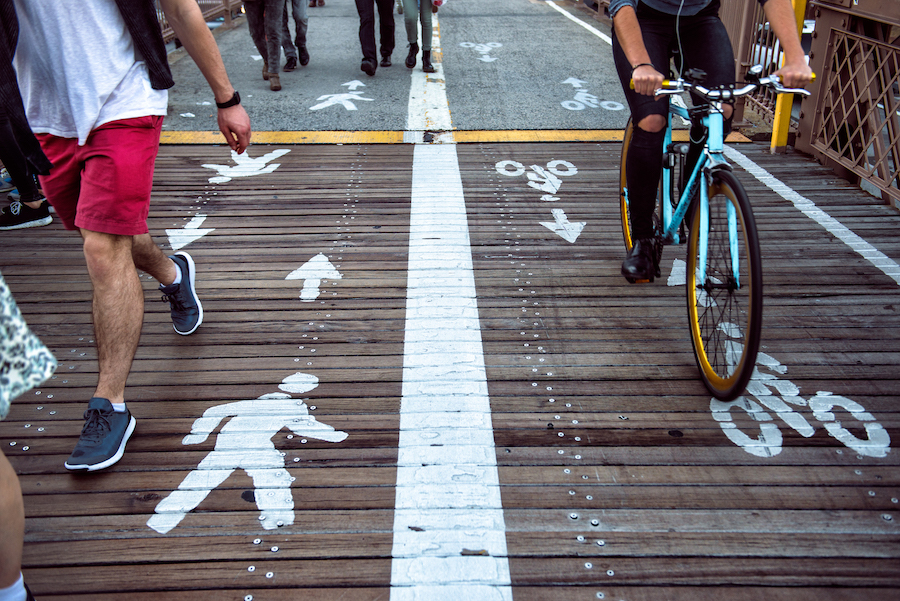
Connecting trails and walking and biking infrastructure can change our communities—urban, suburban and rural—for the better. And as the connectivity of trail networks improves, so does the health of people and places.
“We have the responsibility to advocate for a future reimagined around trails, walking and biking.”
Before us is the challenge to be creative in considering how those connections can happen, challenging ourselves and communities nationwide to dream differently about the spaces where we all interact. To reimagine how public space can be used to provide areas to walk, bike and move that are separated from vehicle traffic and easy to get to from our homes—space that is much needed and too sparse.
With the pandemic, we saw a notable culture shift in America. The emphasis placed on quickly creating access to safe places for people to get outdoors was unprecedented and incredible. In more than 70 cities and towns, local officials transformed streets into outdoor spaces for walking and biking. In hundreds of places, parking lots and streetscapes were transformed into restaurants and eateries.
New communities have emerged in our public streets. There is an opportunity to hold onto that culture shift, rethinking how public spaces can be transformed. Just as we pioneered converting rail corridors to trails, imagine if more streets and public spaces were used for walking and biking in ways we’ve never considered before.
Right now, our world is being reimagined. Our lives look more different than we ever thought possible. How we live, work and play has changed dramatically. How we rebuild is ours to define. We have the responsibility to advocate for a future reimagined around trails, walking and biking.
Creating Safe Ways for Everyone to Walk, Bike and Be Active Outdoors
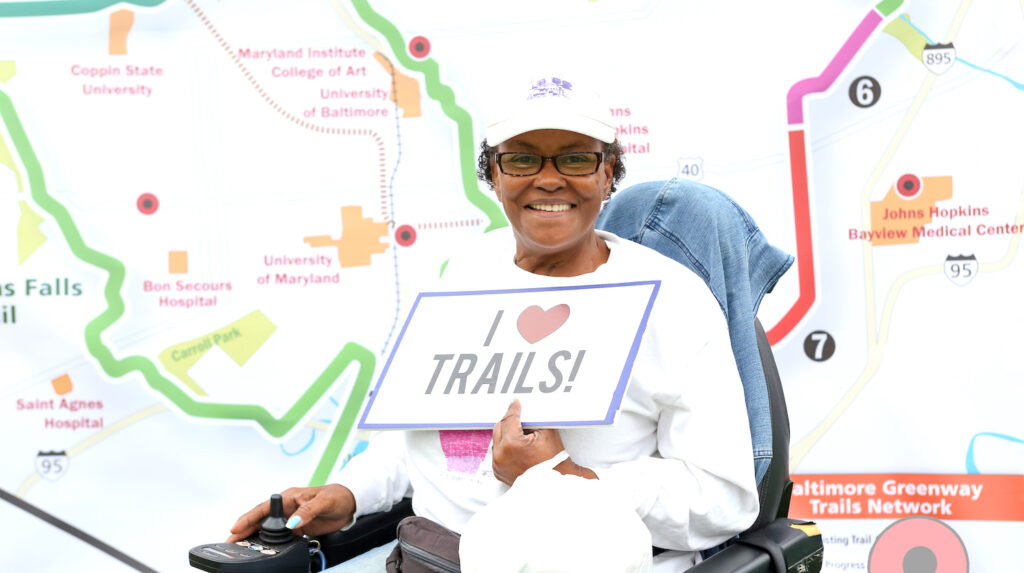
“We [too often] take for granted these public spaces and the impact they can have … just to be able to take a run and connect with nature and back into your own mind is priceless.”
At the same time that we as a nation respond to the pandemic, an important and long overdue reckoning with the racial inequities that plague our country has begun. Alongside the pandemic, and arguably amplified by its disparate impact, racism and social injustices experienced by Black people, Indigenous communities and People of Color in our country have been thrust onto the national stage.
At RTC, we believe that every person—regardless of race, gender, age, ability or other minority status—deserves access to free, accessible and safe places where they can walk, bike and be active. We believe trails have the power to transform communities and create joyful, vibrant public spaces that are equitable and inclusive.
Our Vision: Trails connect everyone, everywhere.
We are committed to better understanding and addressing current and historical inequities that impact who has access to trails through our applied research and the lived experiences of people in communities. We prioritize authentic community-led planning processes to reflect local needs and values, ensuring that residents derive long-term benefits from trail projects and related economic development initiatives.
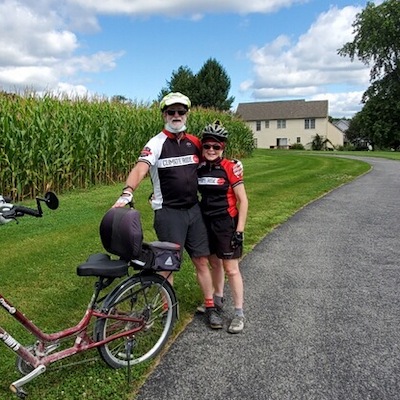
As the nation’s leading trails organization, we are using this equity lens to focus our own internal structure and decisions. We’re challenging ourselves to lead with an equity mindset, and we’re focused on increasing the diversity and representation of our organization and the field. At the same time, we’re celebrating and holding up stories and experiences that align with these values.
Throughout the pandemic, thousands of people have reached out to share their “trail moments”—stories as diverse as the communities our nation’s trails serve and as far reaching as the moments we can create when we’re out on the trail. Through our #TrailMoments campaign, we’re sharing these stories—your stories—in the hope that they will inspire others to explore trails and the outdoors, while helping our local leaders understand just how important trails are to the health and well-being of our communities.
As one person shared, “We [too often] take for granted these public spaces and the impact they can have … just to be able to take a run and connect with nature and back into your own mind is priceless.”
Reflecting on this year and looking forward to the future, RTC’s strategic plan is based on principles that will guide the organization in its mission to build a nation connected by trails during a time of unprecedented challenge, opportunity and responsibility. We are humbled by the support and enthusiasm for trails and RTC’s work in this moment, and we’re grateful for our leadership role as we move forward.
Together, we will build a future where everyone has safe ways to walk, bike and be active outdoors.
Share Your Trail Moment
Have you recently discovered trails, or are you a long-time trail enthusiast? Either way, we hope you’ll share your “Trail Moments”—and the stories of how trails have impacted your life during COVID-19. Take the survey below, or share using #TrailMoments on social media.
Special thanks to RTC President Ryan Chao for this—the latest post in his monthly series on the role of trails in connecting the nation, and creating healthy, thriving communities across America.

Donate
Everyone deserves access to safe ways to walk, bike, and be active outdoors.